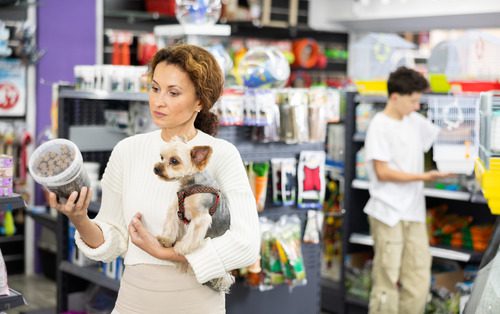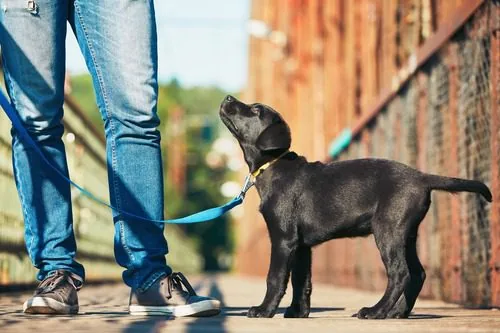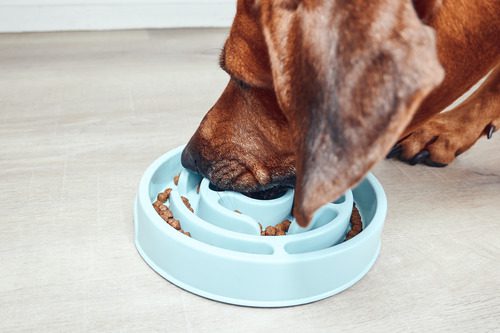Do Dogs Get Heat Cramps?
Ensuring our dogs stay comfortable during hot weather is a priority for every pet owner. With temperatures soaring, you might wonder, “Do dogs get heat cramps?” It’s essential to understand how heat affects our canine companions and how to protect them from potential risks. This blog will dive into what heat cramps are, how they manifest in dogs, and steps to prevent and manage them. If you have any concerns about your dog’s health during the heat, call Brown Veterinary Hospital at 812-645-0715 or book an appointment online.

What Are Heat Cramps?
Heat cramps in dogs are involuntary muscle spasms that can occur due to excessive heat and dehydration. Just like humans, dogs can experience these painful cramps when their bodies overheat. Heat cramps typically affect the large muscle groups, such as those in the legs and abdomen. Understanding the causes and symptoms of heat cramps is vital for every pet owner, especially during the hot summer months.
Causes of Heat Cramps in Dogs
Heat cramps occur when dogs are exposed to high temperatures for extended periods. Dehydration is a significant contributing factor, as it leads to an imbalance of electrolytes in the body. Dogs cool themselves primarily through panting, which can be less effective in extreme heat, leading to overheating and muscle cramps.
Symptoms of Heat Cramps
Recognizing the signs of heat cramps is crucial to ensuring your dog receives timely care. Symptoms of heat cramps in dogs include:
- Muscle spasms
- Panting
- Restlessness
- Whimpering or crying
- Stiffness
If you observe any of these symptoms, it’s essential to take immediate action to cool your dog down and provide relief.
Preventing Heat Cramps in Dogs
Prevention is always better than cure, and there are several steps you can take to minimize the risk of heat cramps in your dog. Keeping your dog cool and hydrated is the key to preventing heat-related issues.
Hydration
Ensure your dog has access to fresh, cool water at all times. During hot weather, dogs need to drink more to stay hydrated. Consider carrying a portable water bottle and bowl when you take your dog out for walks or outdoor activities.
Avoiding Peak Heat
Limit your dog’s exposure to extreme heat. Try to walk your dog early in the morning or late in the evening when temperatures are cooler. Avoid strenuous activities during the peak heat of the day.
Shade and Rest
Provide plenty of shade and a cool resting spot for your dog. Whether you’re at home or outdoors, make sure your dog has a shaded area to retreat to when they start to feel the heat.
Managing Heat Cramps in Dogs
If your dog shows signs of heat cramps, it’s crucial to act quickly to alleviate their discomfort. Here are some steps you can take to manage heat cramps in your dog:
- Immediate Cooling: Move your dog to a cooler environment as soon as possible. Use fans or air conditioning to help lower their body temperature. You can also apply cool, wet towels to their body, focusing on the neck, armpits, and groin areas.
- Hydration: Encourage your dog to drink water. You can offer electrolyte solutions specifically designed for pets to help restore the balance of minerals in their body.
- Gentle Massage: Gently massaging the affected muscles can help relieve spasms and reduce pain. Be gentle to avoid causing further discomfort to your dog.
When to Seek Veterinary Help
While mild cases of heat cramps can often be managed at home, severe symptoms require veterinary attention. If your dog’s condition does not improve or worsens, seek professional help immediately.
Symptoms Requiring Veterinary Attention
- Persistent muscle spasms that do not subside with home care
- Unusual tiredness or lack of energy
- Vomiting or diarrhea
- Collapse
Understanding the Difference Between Heat Cramps and Heatstroke
It’s essential to differentiate between heat cramps and heatstroke, as the latter is a more severe condition that requires immediate veterinary intervention. Heatstroke occurs when a dog’s body temperature rises to dangerous levels, leading to potential organ damage and even death.
Symptoms of Heatstroke
- High body temperature above 103°F (39.4°C)
- Heavy panting
- Red or pale gums indicating poor blood circulation
- Rapid heartbeat
- Confusion or difficulty standing
If you suspect your dog is suffering from heatstroke, contact Brown Veterinary Hospital at 812-645-0715 immediately.
Protecting Your Dog from Heat Cramps
Understanding heat cramps in dogs and how to prevent and manage them is crucial for every pet owner. By taking proactive steps to keep your dog cool and hydrated, you can help ensure their comfort and safety during the hot summer months. If you have any concerns about your dog’s health or need further assistance, call Brown Veterinary Hospital at 812-645-0715 or book an appointment online.
Recent Posts
About Brown Veterinary Hospital
We are here to serve as your partner in keeping your four-legged family member healthy, ensuring you have all the tools you need to provide them with a lifetime of outstanding care. Our animal hospital in Terre Haute offers a full range of services to nurture and extend your pet’s life, from wellness and preventative care to critical care, exotic pet care, and dermatology.





